by Marie Chieppo
For centuries water has been used as a focal point in gardens. Fountains, waterfalls and reflecting pools provide a symphony for the senses and add interest to any landscape. The extreme weather conditions we have been experiencing remind us of the ecological balance we need to work towards with many issues. Using water in more responsible ways is at the top of the list. The urgency for more and more people to harvest rain water, control erosion and reduce runoff is no longer in the future. We must address it now.
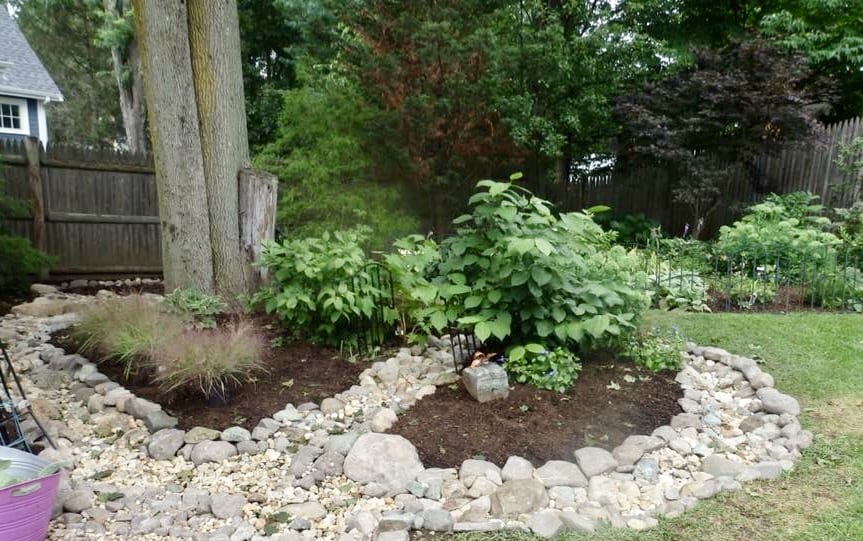
The dry river installed in my yard has a deep midsection that functions as the catchment. As the water slowly makes its way down, it irrigates the soil and plant roots. Photo: Marie Chieppo
For years my gardens have been composed of mostly native plant material combined with particular non-natives. I participated in the ELA’s 2017 August Native Garden Tour, which caused me to take a critical look at my yard. Included on my property was an area where the soil was terrible; erosion and leaching were my biggest problems. I also have neglected plants at the bottom of the property in dire need of water. Rather than fight with it, I decided to have a dry river installed.
Ben Crouch, an ELA member and xeriscaping pro, came to my rescue. Using science combined with art he and his team created a beautiful and useful structure. The various shapes, textures and colors of the stones work beautifully with the landscape. With great precision his team dug and graded the area, buried pipes, created a network of catchment basins and swales and placed the stones.
Dry River Ideas
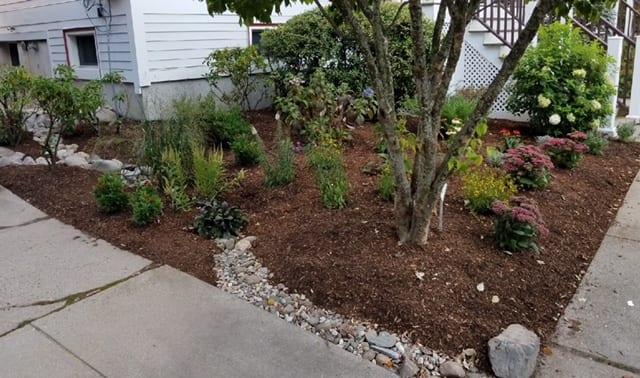
On this property a dry stream flows out of a large gravel catchment area designed to slow heavy flows from rainfall and correct an erosion problem. There is a small swale fed by an underground pipe that is fed by the catchment. The dry stream continues to the street as an overspill for extreme rain events. Photo: landofplentyboston.com
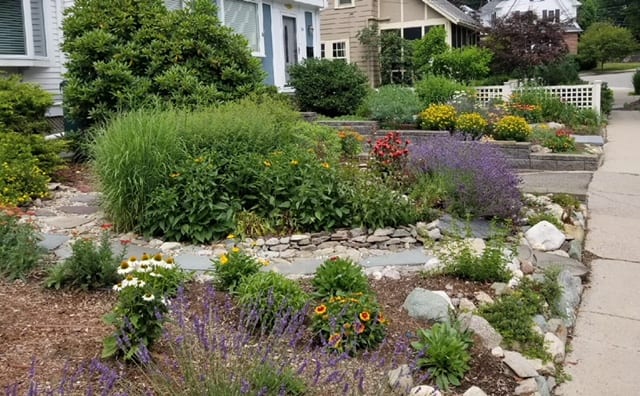
One of the main purposes of this dry stream is to feed the rain garden during dry spells. Downspouts are connected to two rain barrels that collect the water and when needed are opened and piped to the garden. In addition, a dry stream overspill path from the rain garden was constructed. Photo: landofplentyboston.com
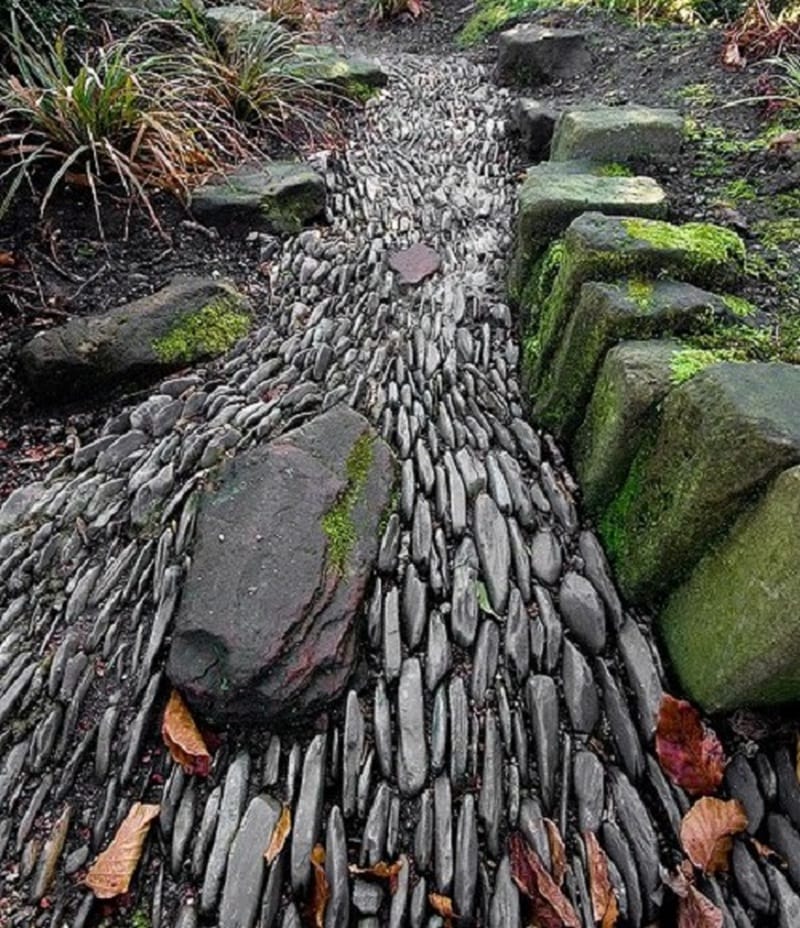
A dry river can offer aesthetically pleasing and practical options. The rocks used in this photo were chosen to look like a flowing current. Gorgeous! However, unlike a river with different-sized stones, it is not very effective at slowing down water. Photo: Jude Simpson
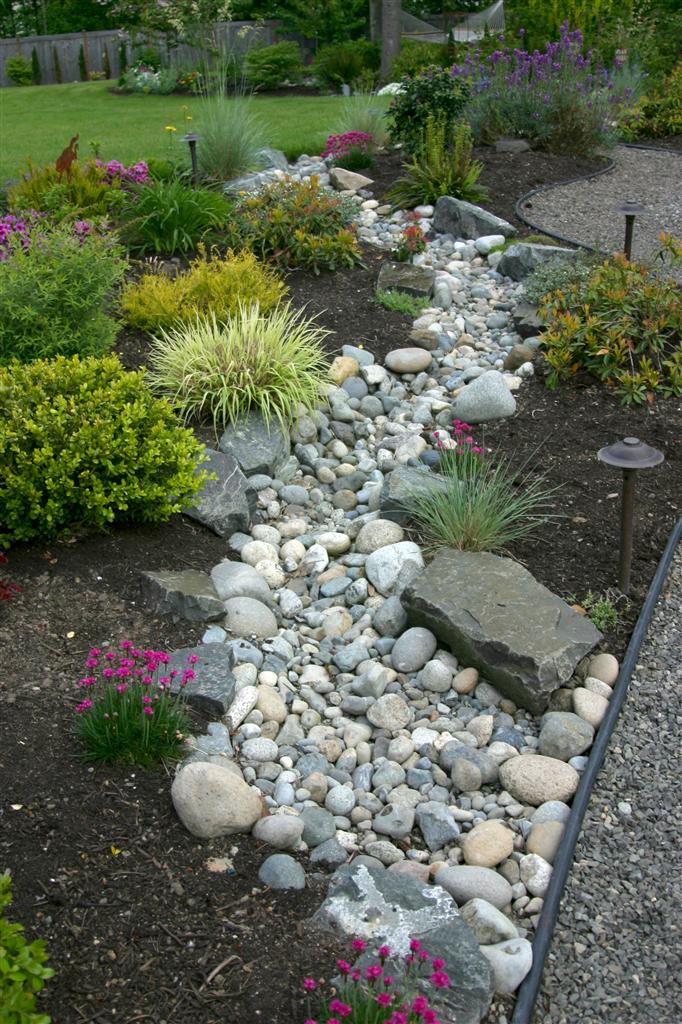
A meandering stream helps reduce the velocity of the water (increasing the likeliness that it will irrigate) and creates a more natural look. Dirt from the dug-up swale surrounds the periphery and is used for plantings. Photo: blessmyweeds.com
On a larger scale, as our urban areas continue to grow, the repurposing and harvesting of water will be front and center. In the midst of historic droughts and rainstorms, the need for mechanisms that address these issues will become increasingly important.
Hopefully the reality of how climates are being affected will mitigate water consumption. In the meantime, we will continue to use dry rivers, rain gardens, permeable surfaces and other measures. Our ecological systems are counting on it.
About the Author
Marie Chieppo is a Certified Massachusetts Master Gardener and Certified Native Plant Designer and Horticulturist. She is Principal at Masters at Work Garden Design, LLC where she has been creating outdoors spaces for over 15 years.
***
Each author appearing herein retains original copyright. Right to reproduce or disseminate all material herein, including to Columbia University Library’s CAUSEWAY Project, is otherwise reserved by ELA. Please contact ELA for permission to reprint.
Mention of products is not intended to constitute endorsement. Opinions expressed in this newsletter article do not necessarily represent those of ELA’s directors, staff, or members.

